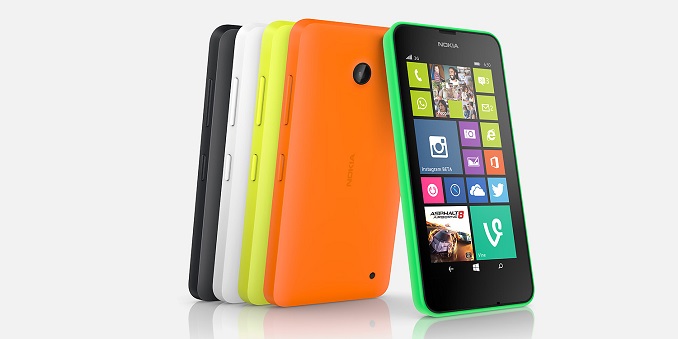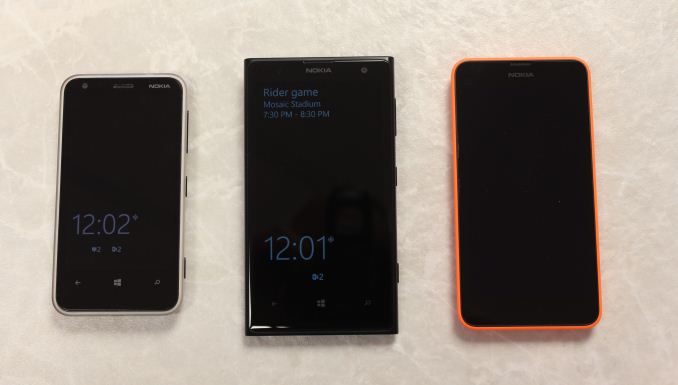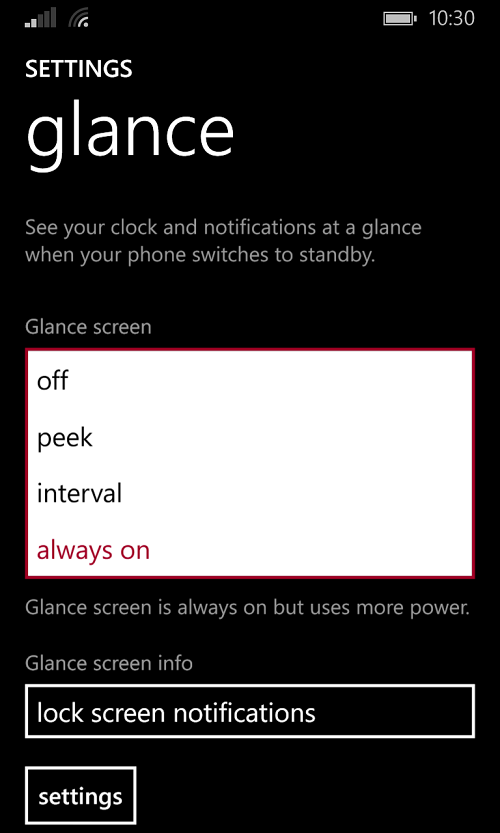Nokia Lumia 630 Review
by Brett Howse on July 22, 2014 8:00 AM EST- Posted in
- Smartphones
- Microsoft
- Nokia
- Mobile
- windows phone

Introduction
With the introduction of the Lumia 630 and 635 models, we have our first look at the next generation of low cost Windows Phone devices, and the Lumia 630 is a phone with many firsts for this segment. It’s the first phone launched with Windows Phone 8.1 from any manufacturer. It’s also the first phone released after the acquisition of Nokia by Microsoft, though the phone was announced at BUILD prior to the final paperwork was completed on the acquisition. This is the first Windows Phone ever with an optional Dual SIM model. This is also the first Windows Phone which incorporates a SensorCore branded pedometer. It’s the first Windows Phone which replaces the hardware back, home, and search keys with on-screen equivalents, and unfortunately it’s the first Windows Phone which is lacking a hardware camera button, ambient light sensor, and proximity sensor. This is definitely a device of firsts for Windows Phone, but not all of the firsts are good news.
Clearly the high volume for Windows Phone was the low cost, off contract devices. Though Nokia (now Microsoft) still continues to make and sell higher end devices such as the Lumia Icon (930) and 1520 phablet, the low end of the market is where the volume is, and many of the changes to Windows Phone over the last year have been to help drive down costs of the devices by removing the requirements for certain sensors, hardware buttons, and creating a reference platform with Qualcomm to allow ODMs to easily create Windows Phone devices. We are seeing the same thing happening with Android as well, with the low cost segment practically ignored by all OEMs until Motorola launched the Moto G which is a capable smartphone for a budget price, and now with the Moto E they are aiming even lower. The Lumia 520 is still a capable competitor at a low price, but the landscape has changed in the past year, and good enough is no longer enough.
By name, the Lumia 630 is the successor to the Lumia 620. But truly it is a successor to the Lumia 520, as the Lumia 620 still outdoes both the 520 and 630 in features.
| Low End Lumias | ||||
| Nokia Lumia 520 | Nokia Lumia 620 | Nokia Lumia 625 | Nokia Lumia 630 | |
| Display Size | 4.0" | 3.8" | 4.7" | 4.5" |
| CPU |
Qualcomm Snapdragon S4 Plus MSM8227 Krait Dual-Core 1.0 GHz |
Qualcomm Snapdragon S4 Plus MSM8227 Krait Dual-Core 1.0 GHz |
Qualcomm Snapdragon S4 Plus MSM8930 Krait Dual-Core 1.2 GHz |
Qualcomm Snapdragon 400 MSM8226 Cortex A7 Quad-Core 1.2 GHz |
| RAM/NAND | 512 MB / 8 GB + MicroSD | 512 MB / 8 GB + MicroSD | 512 MB / 8 GB + MicroSD | 512 MB / 8 GB + MicroSD |
| Cellular Connectivity | HSPA+ 21.1 Mbps | HSPA+ 21.1 Mbps | LTE Cat 3 100 Mbps | HSPA+ 21.1 Mbps |
| Corning Gorilla Glass | No | No | Yes (GG2) | Yes (GG3) |
| Clear Black | No | Yes | No | Yes |
| Glance Screen | No | Yes | No | No |
| Front Facing Camera | No | Yes | Yes | No |
| Rear LED Flash | No | Yes | Yes | No |
| Near Field Communication | No | Yes | No | No |
| Sensors |
Ambient Light Sensor Accelerometer Proximity Sensor |
Ambient Light Sensor Accelerometer Proximity Sensor |
Ambient Light Sensor Accelerometer Magnetometer Proximity Sensor |
Accelerometer Sensor Core |
The 630 loses a lot of features over the Lumia 620 in an effort to hit an even lower price point than the 620 did. It keeps the ClearBlack display (more on that later) but loses practically everything else. The Front Facing Camera is gone, the rear LED flash is no more. Near Field Communication (NFC) was in the 620, but is no longer in the 630. In fact, as seen in the above chart, the 630 even loses out over the 520 with the lack of proximity sensor, and more importantly the ambient light sensor. All of this was an effort to keep the Bill of Materials down to allow the device to be sold for a lower price, and on that front they did do well with the Lumia 630 having an off-contract price of around $160, compared to the Lumia 620 which was about $240 when it launched.
The biggest omission in my opinion though is the lack of Glance Screen support. For those that haven’t used a Lumia with Glance, it arrived last year with the “Amber” firmware update, and first debuted on the Lumia 925. It’s been updated several times, and the most current version of Glance is simply fantastic. With Windows Phone market share not being very high, it’s probably a good idea to go over Glance. The Glance screen is simply the phone displaying some information on the display when the device is powered off.
 Lumia 620 Glance (left) vs Lumia 1020 OLED Glance (center) vs Lumia 630 no Glance (right)
Lumia 620 Glance (left) vs Lumia 1020 OLED Glance (center) vs Lumia 630 no Glance (right)
With all versions of Glance, the clock and several phone settings such as vibrate or charging would be displayed on the screen. With updates to the firmware, other features soon came such as the ability to display lock screen notifications on the glance screen as well, so you can tell if you’ve missed calls, texts, or other notifications with the device off. With the last update to glance, the detailed lock screen notification for Windows Phone (in my case, my next appointment in the calendar) will briefly appear on the Glance screen when you either turn off the phone, or if the phone senses your hand over the phone. The detailed info goes away at the first Glance refresh to keep the power consumption down. You can optionally enable Glance periodically at an interval, or with a peek mode where it will only enable Glance when it senses your hand over the display.
Glance works by utilizing panel self-refresh to be able to display some items with the display off. This feature is better with AMOLED displays, because they can display a small amount of white text with minimal power draw, but even so Nokia has made the Glance screen optional on LCD equipped devices as well, including the Lumia 620. As for why it’s missing, as with everything it comes down to cost. The Lumia Icon (930) is also missing Glance because Nokia couldn’t source a panel with memory for a reasonable price, but the 630 has the added caveat of not including either ambient light or proximity sensors to disable Glance when the phone is in your pocket. We're not sure if the 630 display includes memory or not but it could certainly be a contributing factor to it being unavailable on this model.











83 Comments
View All Comments
LiviuTM - Tuesday, July 22, 2014 - link
Correction to correction: Page 7, actuallyYofa - Tuesday, July 22, 2014 - link
riders fan?! ignore!Wolfpup - Tuesday, July 22, 2014 - link
I've got an iPhone 5s, but I've gotten Nokia 520s for two people now. I love it, they love it. It's really a great phone, and like my iPhone, there's just something pleasurable about using it. It (like real Windows) also runs a lot faster than Android on comparable hardware.The biggest issue I have with Windows Phone right now is that like Android it's stuck getting OS updates from the carrier. Microsoft needs to switch to an Apple/Windows model of controlling the updates themselves. That said, at least so far even the 520 is getting every single update Microsoft does...which I guess still beats Android save for the Nexus devices.
My only complain with this 630 is the RAM. I realize hitting a $100 price point is kind of crazy, and the 520 runs fine, but still...1GB would definitely be the first upgrade I'd want for this.
Considering I still carry an iPod anyway, I'd seriously consider a Windows Phone for myself if my iPhone died, just because of the price, though I think I'd go with the 6" model.
Wolfpup - Tuesday, July 22, 2014 - link
Forgot to mention...I do wonder about the CPU choice. Obviously it works (and as mentioned you can't compare iOS or Windows Phone or even real Windows to Android as Android requires much beefier hardware to get the same performance)...but I am curious about using a quad A7. A7 supposedly tries to get close to A9 performance with a smaller die area, but then Krait is already A9+. Not sure it makes sense to replace 2 Kraits with 4 A7s...but oh well, I'm sure it's fine!Scary how much faster Apple's Cyclone is than everything else. Right now it doesn't even matter...it's mostly overkill for a phone, but probably not for the iPad, and certainly not for a more OS X-like iPad...
rgba - Tuesday, July 22, 2014 - link
In the HTC One mini 2 review, Anand mentioned that Cortex-A7 actually delivers slightly higher IPC than Krait 200. Considering that, quad A7 running at 1190 MHz is a clear improvement over dual Krait 200 @ 972 MHz.ruggia - Wednesday, July 23, 2014 - link
Higher IPC is meaningless when A7 runs on thumb instructions and is In-order, as opposed to Krait which runs full armv7 and is out of orderextide - Thursday, July 24, 2014 - link
Not true, A7 runs the full ARMv7 ISA, not just thumb. The cortex M series chips run thumb, but ALL cortex A class cpu's run full ARM ISA's. (ARM7 in this case obviously, but the A5x cores run ARMv8).It is in order, and Krait is out of order, but IPC is very much NOT meaningless!
tuxRoller - Wednesday, July 23, 2014 - link
I guess you missed this:The Lumia 630 handily beats the Moto G in memory performance, but the Moto G wins the rest of the tests. We’re still looking at a performance deficit for most tasks with Windows Phone 8.1 which is something Microsoft will need to work on going forward.
So. despite the Android VM deficit it still manages to at least keep up with, and generally surpass, win8.x. Can't wait till the new ART drops.
Flunk - Tuesday, July 22, 2014 - link
"If you play a lot of games, avoid this device."If you play a lot of games, avoid Windows Phone. The selection is just not fantastic.
octonysa - Tuesday, July 22, 2014 - link
Computer World blog says Google search banned from the 630 and 930. That kills this phone (IMO).